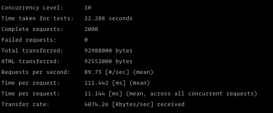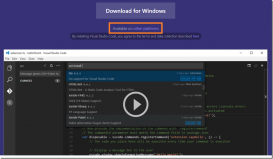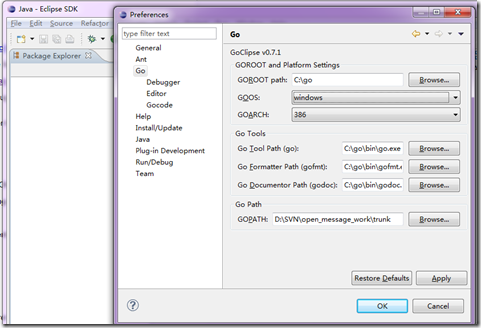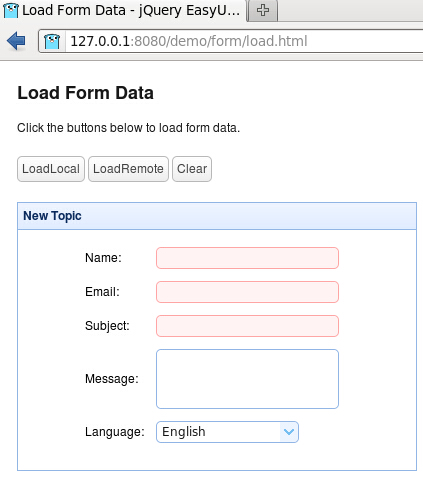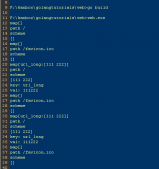前言
上回在 用 Go 写一个轻量级的 ssh 批量操作工具 里提及过,我们做 Golang 并发的时候要对并发进行限制,对 goroutine 的执行要有超时控制。那会没有细说,这里展开讨论一下。
以下示例代码全部可以直接在 The Go Playground 上运行测试:
并发
我们先来跑一个简单的并发看看
|
1
2
3
4
5
6
7
8
9
10
11
12
13
14
15
16
17
18
19
20
21
22
23
24
25
26
27
28
29
30
|
package mainimport ( "fmt" "time")func run(task_id, sleeptime int, ch chan string) { time.Sleep(time.Duration(sleeptime) * time.Second) ch <- fmt.Sprintf("task id %d , sleep %d second", task_id, sleeptime) return}func main() { input := []int{3, 2, 1} ch := make(chan string) startTime := time.Now() fmt.Println("Multirun start") for i, sleeptime := range input { go run(i, sleeptime, ch) } for range input { fmt.Println(<-ch) } endTime := time.Now() fmt.Printf("Multissh finished. Process time %s. Number of tasks is %d", endTime.Sub(startTime), len(input))} |
函数 run() 接受输入的参数,sleep 若干秒。然后通过 go 关键字并发执行,通过 channel 返回结果。
channel 顾名思义,他就是 goroutine 之间通信的“管道"。管道中的数据流通,实际上是 goroutine 之间的一种内存共享。我们通过他可以在 goroutine 之间交互数据。
|
1
2
|
ch <- xxx // 向 channel 写入数据<- ch // 从 channel 中读取数据 |
channel 分为无缓冲(unbuffered)和缓冲(buffered)两种。例如刚才我们通过如下方式创建了一个无缓冲的 channel。
|
1
|
ch := make(chan string) |
channel 的缓冲,我们一会再说,先看看刚才看看执行的结果。
|
1
2
3
4
5
6
|
Multirun starttask id 2 , sleep 1 secondtask id 1 , sleep 2 secondtask id 0 , sleep 3 secondMultissh finished. Process time 3s. Number of tasks is 3Program exited. |
三个 goroutine `分别 sleep 了 3,2,1秒。但总耗时只有 3 秒。所以并发生效了,go 的并发就是这么简单。
按序返回
刚才的示例中,我执行任务的顺序是 0,1,2。但是从 channel 中返回的顺序却是 2,1,0。这很好理解,因为 task 2 执行的最快嘛,所以先返回了进入了 channel,task 1 次之,task 0 最慢。
如果我们希望按照任务执行的顺序依次返回数据呢?可以通过一个 channel 数组(好吧,应该叫切片)来做,比如这样
|
1
2
3
4
5
6
7
8
9
10
11
12
13
14
15
16
17
18
19
20
21
22
23
24
25
26
27
28
29
30
31
|
package mainimport ( "fmt" "time")func run(task_id, sleeptime int, ch chan string) { time.Sleep(time.Duration(sleeptime) * time.Second) ch <- fmt.Sprintf("task id %d , sleep %d second", task_id, sleeptime) return}func main() { input := []int{3, 2, 1} chs := make([]chan string, len(input)) startTime := time.Now() fmt.Println("Multirun start") for i, sleeptime := range input { chs[i] = make(chan string) go run(i, sleeptime, chs[i]) } for _, ch := range chs { fmt.Println(<-ch) } endTime := time.Now() fmt.Printf("Multissh finished. Process time %s. Number of tasks is %d", endTime.Sub(startTime), len(input))} |
运行结果,现在输出的次序和输入的次序一致了。
Multirun start
task id 0 , sleep 3 second
task id 1 , sleep 2 second
task id 2 , sleep 1 second
Multissh finished. Process time 3s. Number of tasks is 3
Program exited.
超时控制
刚才的例子里我们没有考虑超时。然而如果某个 goroutine 运行时间太长了,那很肯定会拖累主 goroutine 被阻塞住,整个程序就挂起在那儿了。因此我们需要有超时的控制。
通常我们可以通过select + time.After 来进行超时检查,例如这样,我们增加一个函数 Run() ,在 Run() 中执行 go run() 。并通过 select + time.After 进行超时判断。
|
1
2
3
4
5
6
7
8
9
10
11
12
13
14
15
16
17
18
19
20
21
22
23
24
25
26
27
28
29
30
31
32
33
34
35
36
37
38
39
40
41
42
43
|
package mainimport ( "fmt" "time")func Run(task_id, sleeptime, timeout int, ch chan string) { ch_run := make(chan string) go run(task_id, sleeptime, ch_run) select { case re := <-ch_run: ch <- re case <-time.After(time.Duration(timeout) * time.Second): re := fmt.Sprintf("task id %d , timeout", task_id) ch <- re }}func run(task_id, sleeptime int, ch chan string) { time.Sleep(time.Duration(sleeptime) * time.Second) ch <- fmt.Sprintf("task id %d , sleep %d second", task_id, sleeptime) return}func main() { input := []int{3, 2, 1} timeout := 2 chs := make([]chan string, len(input)) startTime := time.Now() fmt.Println("Multirun start") for i, sleeptime := range input { chs[i] = make(chan string) go Run(i, sleeptime, timeout, chs[i]) } for _, ch := range chs { fmt.Println(<-ch) } endTime := time.Now() fmt.Printf("Multissh finished. Process time %s. Number of task is %d", endTime.Sub(startTime), len(input))} |
运行结果,task 0 和 task 1 已然超时
Multirun start
task id 0 , timeout
task id 1 , timeout
tasi id 2 , sleep 1 second
Multissh finished. Process time 2s. Number of task is 3
Program exited.
并发限制
如果任务数量太多,不加以限制的并发开启 goroutine 的话,可能会过多的占用资源,服务器可能会爆炸。所以实际环境中并发限制也是一定要做的。
一种常见的做法就是利用 channel 的缓冲机制——开始的时候我们提到过的那个。
我们分别创建一个带缓冲和不带缓冲的 channel 看看
|
1
2
|
ch := make(chan string) // 这是一个无缓冲的 channel,或者说缓冲区长度是 0ch := make(chan string, 1) // 这是一个带缓冲的 channel, 缓冲区长度是 1 |
这两者的区别在于,如果 channel 没有缓冲,或者缓冲区满了。goroutine 会自动阻塞,直到 channel 里的数据被读走为止。举个例子
|
1
2
3
4
5
6
7
8
9
10
11
|
package mainimport ( "fmt")func main() { ch := make(chan string) ch <- "123" fmt.Println(<-ch)} |
这段代码执行将报错
fatal error: all goroutines are asleep - deadlock!
goroutine 1 [chan send]:
main.main()
/tmp/sandbox531498664/main.go:9 +0x60Program exited.
这是因为我们创建的 ch 是一个无缓冲的 channel。因此在执行到 ch<-"123",这个 goroutine 就阻塞了,后面的 fmt.Println(<-ch) 没有办法得到执行。所以将会报 deadlock 错误。
如果我们改成这样,程序就可以执行
|
1
2
3
4
5
6
7
8
9
10
11
|
package mainimport ( "fmt")func main() { ch := make(chan string, 1) ch <- "123" fmt.Println(<-ch)} |
执行
123
Program exited.
如果我们改成这样
|
1
2
3
4
5
6
7
8
9
10
11
12
13
|
package mainimport ( "fmt")func main() { ch := make(chan string, 1) ch <- "123" ch <- "123" fmt.Println(<-ch) fmt.Println(<-ch)} |
尽管读取了两次 channel,但是程序还是会死锁,因为缓冲区满了,goroutine 阻塞挂起。第二个 ch<- "123" 是没有办法写入的。
fatal error: all goroutines are asleep - deadlock!
goroutine 1 [chan send]:
main.main()
/tmp/sandbox642690323/main.go:10 +0x80Program exited.
因此,利用 channel 的缓冲设定,我们就可以来实现并发的限制。我们只要在执行并发的同时,往一个带有缓冲的 channel 里写入点东西(随便写啥,内容不重要)。让并发的 goroutine 在执行完成后把这个 channel 里的东西给读走。这样整个并发的数量就讲控制在这个 channel 的缓冲区大小上。
比如我们可以用一个 bool 类型的带缓冲 channel 作为并发限制的计数器。
|
1
|
chLimit := make(chan bool, 1) |
然后在并发执行的地方,每创建一个新的 goroutine,都往 chLimit 里塞个东西。
|
1
2
3
4
5
|
for i, sleeptime := range input { chs[i] = make(chan string, 1) chLimit <- true go limitFunc(chLimit, chs[i], i, sleeptime, timeout)} |
这里通过 go 关键字并发执行的是新构造的函数。他在执行完原来的 Run() 后,会把 chLimit 的缓冲区里给消费掉一个。
|
1
2
3
4
|
limitFunc := func(chLimit chan bool, ch chan string, task_id, sleeptime, timeout int) { Run(task_id, sleeptime, timeout, ch) <-chLimit} |
这样一来,当创建的 goroutine 数量到达 chLimit 的缓冲区上限后。主 goroutine 就挂起阻塞了,直到这些 goroutine 执行完毕,消费掉了 chLimit 缓冲区中的数据,程序才会继续创建新的 goroutine。我们并发数量限制的目的也就达到了。
以下是完整代码
|
1
2
3
4
5
6
7
8
9
10
11
12
13
14
15
16
17
18
19
20
21
22
23
24
25
26
27
28
29
30
31
32
33
34
35
36
37
38
39
40
41
42
43
44
45
46
47
48
49
|
package mainimport ( "fmt" "time")func Run(task_id, sleeptime, timeout int, ch chan string) { ch_run := make(chan string) go run(task_id, sleeptime, ch_run) select { case re := <-ch_run: ch <- re case <-time.After(time.Duration(timeout) * time.Second): re := fmt.Sprintf("task id %d , timeout", task_id) ch <- re }}func run(task_id, sleeptime int, ch chan string) { time.Sleep(time.Duration(sleeptime) * time.Second) ch <- fmt.Sprintf("task id %d , sleep %d second", task_id, sleeptime) return}func main() { input := []int{3, 2, 1} timeout := 2 chLimit := make(chan bool, 1) chs := make([]chan string, len(input)) limitFunc := func(chLimit chan bool, ch chan string, task_id, sleeptime, timeout int) { Run(task_id, sleeptime, timeout, ch) <-chLimit } startTime := time.Now() fmt.Println("Multirun start") for i, sleeptime := range input { chs[i] = make(chan string, 1) chLimit <- true go limitFunc(chLimit, chs[i], i, sleeptime, timeout) } for _, ch := range chs { fmt.Println(<-ch) } endTime := time.Now() fmt.Printf("Multissh finished. Process time %s. Number of task is %d", endTime.Sub(startTime), len(input))} |
运行结果
Multirun start
task id 0 , timeout
task id 1 , timeout
task id 2 , sleep 1 second
Multissh finished. Process time 5s. Number of task is 3
Program exited.
chLimit 的缓冲是 1。task 0 和 task 1 耗时 2 秒超时。task 2 耗时 1 秒。总耗时 5 秒。并发限制生效了。
如果我们修改并发限制为 2
|
1
|
chLimit := make(chan bool, 2) |
运行结果
Multirun start
task id 0 , timeout
task id 1 , timeout
task id 2 , sleep 1 second
Multissh finished. Process time 3s. Number of task is 3
Program exited.
task 0 , task 1 并发执行,耗时 2秒。task 2 耗时 1秒。总耗时 3 秒。符合预期。
有没有注意到代码里有个地方和之前不同。这里,用了一个带缓冲的 channel
|
1
|
chs[i] = make(chan string, 1) |
还记得上面的例子么。如果 channel 不带缓冲,那么直到他被消费掉之前,这个 goroutine 都会被阻塞挂起。
然而如果这里的并发限制,也就是 chLimit 生效阻塞了主 goroutine,那么后面消费这些数据的代码并不会执行到。。。于是就 deadlock 拉!
|
1
2
3
|
for _, ch := range chs { fmt.Println(<-ch)} |
所以给他一个缓冲就好了。
以上就是本文的全部内容,希望对大家的学习有所帮助,也希望大家多多支持服务器之家。
原文链接:https://www.jianshu.com/p/42e89de33065



